Return to 2nd Quarter 2022 articles.
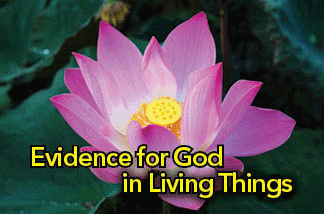
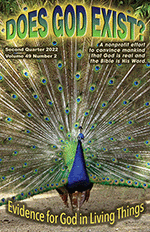
In the more than 50 years that I have been presenting lectureships throughout the United States, I have noticed a big difference between what people react to in rural areas and urban environments. The difference is not a matter of education or knowledge but evidence and observation. If you have spent your life surrounded by concrete and educators who try to tell you what to believe, your appreciation of the natural world is less acute than if you see it yourself. I have even noticed a difference between student response in a university that is a land grant agricultural and engineering school and a school that emphasizes philosophy and humanism.
We can categorize the evidence for God's wisdom in creating living things into several different areas. Each category offers a portrayal of design and wisdom beyond the reach of those who have not seen it for themselves. Carefully studying those areas shows that chance explanations fail. Here are some examples.
THE ROLE OF MIGRATION
Common sense might suggest that some places on Earth are simply unfit for living things. In Alaska, we find a geologically young area that is very sterile. There is no soil for plants to take root because vulcanism and glaciation are still shaping the land. Humans find it a challenge to grow crops in that area.
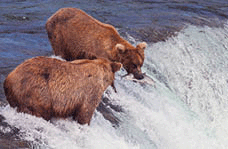
The migration of salmon solves this difficulty. Salmon are designed to return to the stream of their birth when they reach sexual maturity. They lay and fertilize their eggs, and then they die. Their decaying bodies provide the nutrients that allow plant growth. Birds and bears are the obvious living things that survive because of the salmon, but those fish provide food for dozens of other creatures directly or indirectly. In that way, no area becomes devoid of life.
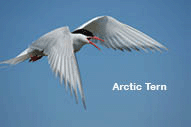
The migration of birds maintains polar areas that would seem to be hostile to life. Some birds, such as the Arctic tern and the Hudsonian godwit, travel 25,000 miles providing life-supporting resources to places 12,000 miles apart. These birds are equipped for long flights by being able to fly while they are sleeping and adjusting their body functions to fit their migration. Their droppings nourish plants, and their eggs feed land animals.
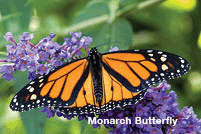
Monarch butterflies migrate from areas all over North America to a wintering area in Mexico. Loons travel between Canadian areas and semitropical areas. Sea turtles migrate to lay their eggs in one particular location. Hummingbirds travel huge distances fulfilling their role as crucial pollinators for widely separate areas. The list of living things that migrate over vast geographic areas is extensive, and researchers try to understand what they do and how they do it. The ability to make these migrations involves using specialized equipment that seems designed to fit the migration.
MECHANISMS THAT ALLOW BALANCE
IN THE NATURAL WORLD
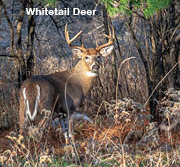
One thing that escapes many people is how important it is that plants and animals keep a balance in the natural world. This becomes more apparent when a predator is eliminated from an ecosystem. For example, in the Midwest in recent years, we have had a problem with deer populations. A hundred years ago, wolves and mountain lions ate deer and kept their populations within a level that did not exceed their food supply.
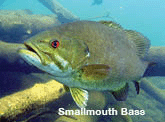
Because the predators have been eliminated, deer populations have grown until there is not adequate food, so the deer are starving, and forests are being destroyed. Maintaining fish populations has been very difficult. When people fished all of the bass out of one of our local lakes, minnows multiplied out of control. That turned the lake into a biological desert because the minnows died due to a lack of food.
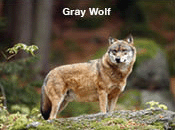
We see a documentary that shows wolves pulling down a moose or lions killing a wildebeest and consider it brutal and cruel, but they often eliminate the weak and aging animals. The human lack of understanding of how to keep balance in the living things we have control over has resulted in some animals becoming extinct. The “fit” do not always survive if we throw the ecology out of balance.
THE SYMBIOTIC NATURE OF LIVING THINGS
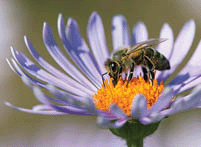
Closely related to balance in the natural world is the design of symbiotic relationships. We can see this when two or more living things depend on each other to survive. A bee pollinates a flower, and the flower must have the bee to reproduce and expand its territory. The bee depends on the flower's nectar for survival. If all the bees are killed, plants will die. In recent years, fruit growers have had to contend with bee die-offs, and maintaining the balance has become exceedingly difficult.
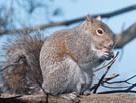
There are numerous cases where symbiotic relationships are so complex that scientists are still trying to understand them. However, most of them are quite simple, such as oak trees and squirrels. Oak trees produce acorns which provide food for squirrels. Squirrels bury the acorns, and their brains are structured so they do not dig up all of the acorns. The acorns that are left buried become new oak trees. Without the squirrels, the forest would cease to exist once the older trees die.
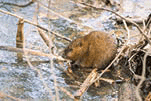
Sometimes an animal alters its environment so that other life forms can exist. For example, beavers dam up a stream to make a pond. The pond not only allows fish to live, but plants that need moist conditions also depend on the beaver. The plants, in turn, provide food for the beaver. Removing beavers from an area means that certain plants will not survive. Likewise, insects frequently have a symbiotic relationship with plants. Several species actually raise plant material as the basis of their food. When you see a relationship like this, you have the old chicken or egg question about which came first — or were they created together.
THE DESIGN OF EVOLUTION
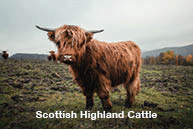
Perhaps one of the great examples of God's role in living things is the design of plants and animals that allows change. If plants could not change, then all the plants would die every time the climate changed. Darwinists constantly point to cases where an environmental change threatened to eliminate a group of living things, and adaptations allowed the plant or animal to survive.

Humans have used this capacity to produce better crops and livestock to feed the growing population. Corn and wheat have been improved to give greater yields. Adaptive breeds of cattle exist today because humans have used selective breeding. The Scottish cattle with their insulating hair survive in a climate that a Charolais would not survive. New varieties of livestock and crops have been developed over the years to provide food to meet the world's needs.
The more we understand the genome of various animals, the more we see that they are designed for a given environmental situation. It has taken hundreds of years for humans to understand how this works. People in rural areas where these principles are applied, see the hand of God that allows a wide variety of plants and animals.
Atheistic evolutionists take the obvious changes built into living things and try to eliminate God as the designer of those changes. However, when you spend every day working with the plants and animals that radiate the wisdom of God's design, it becomes very easy to understand that we can know there is a God through the things he has made (Romans 1:20). Attributing what we see in living things to blind mechanistic chance requires imagination. For those of us who see design in the world around us, chance is statistically impossible to accept.
Picture credits:
© Maria Marganingsih. Image from big stock.com
Cover: © Elenarts. Image from big stock.com
© Andrushko Galyna. Image from big stock.com
© brian paterson. Image from big stock.com
© Beth B. Image from big stock.com
© Arepiv. Image from big stock.com
© EDWARDSIEBENS. Image from big stock.com
© Arepiv. Image from big stock.com
© Daniel Prudek. Image from big stock.com
© johnsfon. Image from big stock.com
© VIKVAD. Image from big stock.com
© Benophotography. Image from big stock.com
© NCIMAGE. Image from big stock.com
Scripture links/references are from BibleGateway.com. Unhighlighted scriptures can be looked up at their website.
